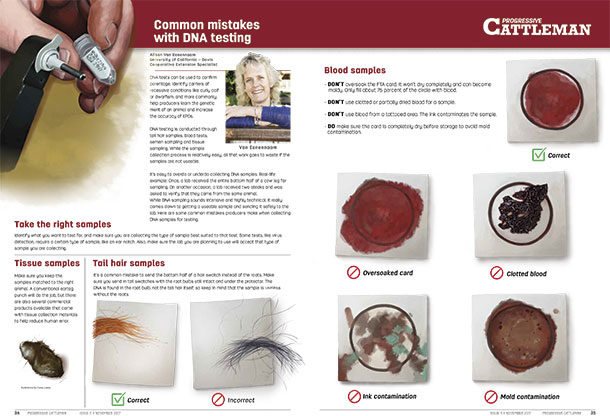DNA tests can be used to confirm parentage, identify carriers of recessive conditions like curly calf or dwarfism, and more commonly, help producers learn the genetic merit of an animal and increase the accuracy of EPDs.
DNA testing is conducted through tail hair samples, blood tests, semen sampling and tissue sampling. While the sample collection process is relatively easy, all that work goes to waste if the samples are not useable.
It’s easy to overdo or underdo collecting DNA samples. Real-life example: Once, a lab received the entire bottom half of a cow leg for sampling. On another occasion, a lab received two steaks and was asked to verify that they came from the same animal.
While DNA sampling sounds intensive and highly technical, it really comes down to getting a useable sample and sending it safely to the lab. Here are some common mistakes producers make when collecting DNA samples for testing.
Click here or on the image above to download a PDF of the poster to view it in more detail. ![]()








